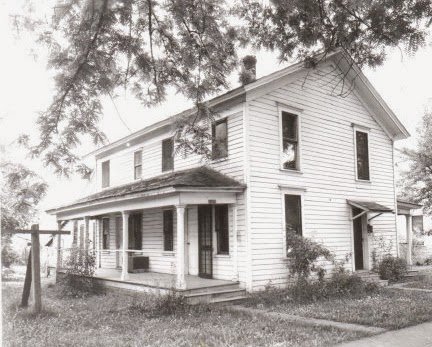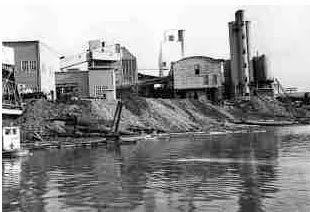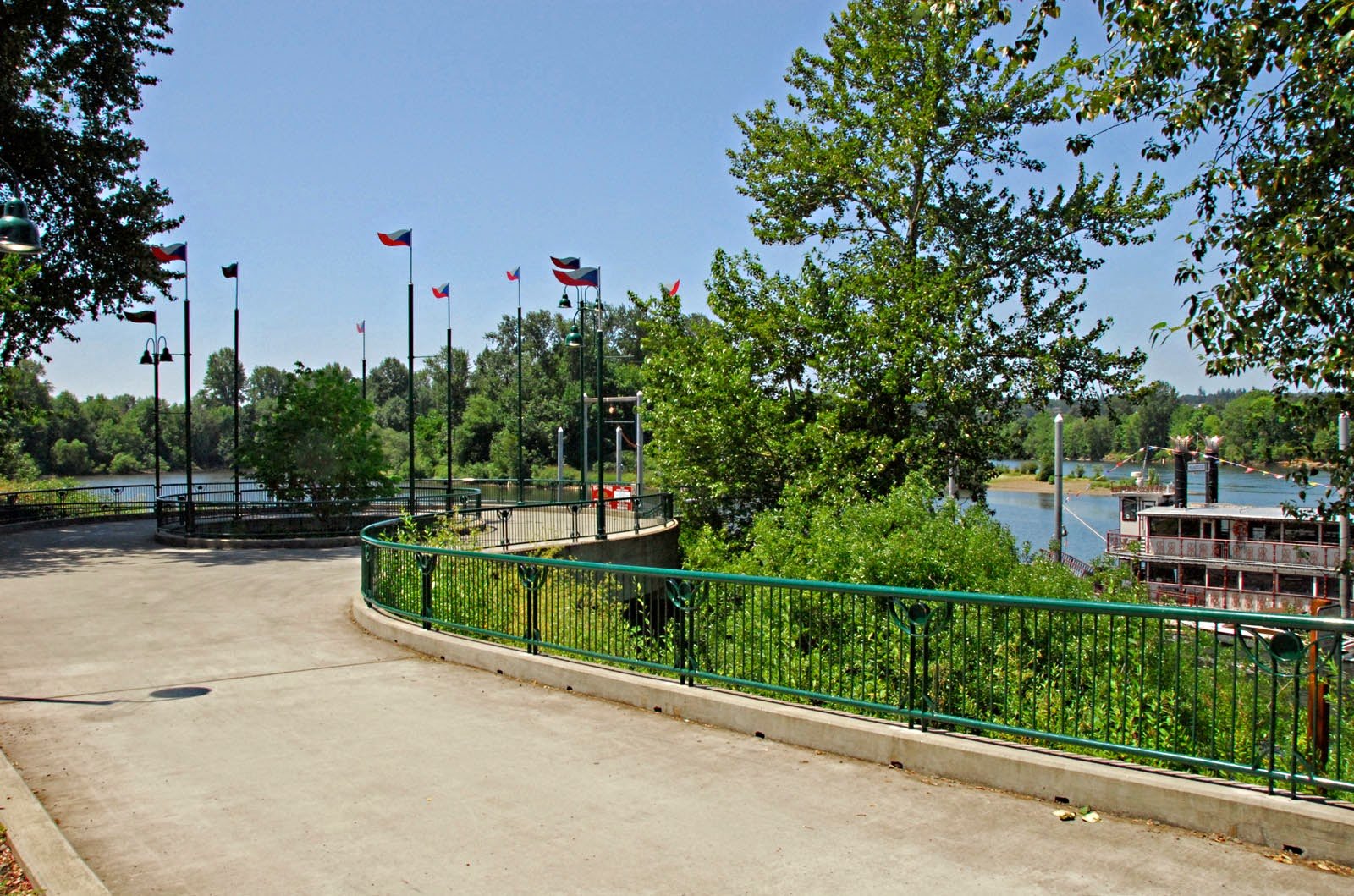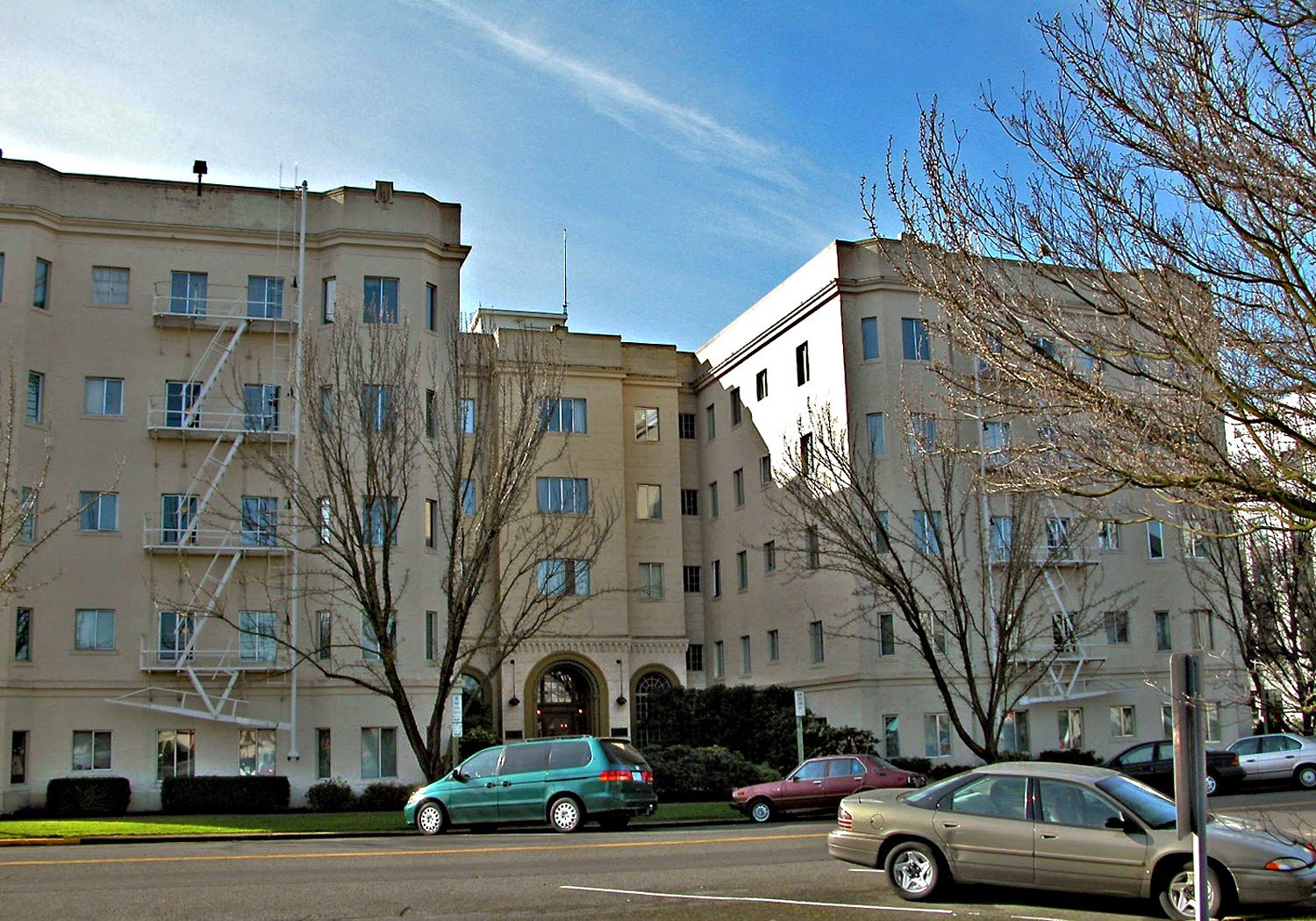World Events
- A worldwide economic Depression begins which will last for ten years.
- Constantinople’s name is changed to Istanbul in the new nation of Turkey.
- Mahatma Gandhi, practicing “civil disobedience”, starts a 200-mile protest march to the sea with 78 followers to protest British control of salt. In Allahabad, a speech introduces the possibility of a new nation, Pakistan for Indian Muslims.
- The Smoot-Hawley Tariff raised taxes on 20,000 products imported into the U.S., cutting trade and deepening the Depression.
- The planet Pluto is discovered.
- 3M markets Scotch Tape, Birdseye begins sale of frozen foods and Hostess Twinkies are in the grocery store. Toll House cookie invented.
- Blondie and Dagwood is a popular comic in the newspaper. Academy Award goes to “Cimarron”. The Pulitzer Prize goes to Years of Grace by Margaret Ann Barnes.
Along our downtown Willamette River shoreline before the creation of Riverfront Park
In Salem
In 1930 the misery of Salem citizens continues to increase from cinders and soot produced in wood-burning boilers in these downtown factories along the Willamette River. The council had passed Salem’s first anti-smoke ordinance in 1923, but enforcement lagged – cinder, ash, and soot continued to fall. In 1929 the Council, acting on the advice of its Smoke Committee, hired an engineer to test to air. His tests showed “the soot-fall” over downtown Salem to average 1,400 tons per square mile annually, only Pittsburgh, PA, ranked worse. Spaulding Lumber Company and Oregon Pulp (seen in the 1950s photograph above) were found to be violating Salem’s 1923 smoke ordinance. A series of photograph taken from a Goodyear blimp in 1947 shows how the problem persisted.
Cinders and soot were not the Salem Council’s only problem as the depression began. The city council began developing a municipal water service to replace the Oregon-Washington Water Services Corp., which was delivering not only water but also “vegetable growth” to the citizens. The Council ordered livestock – especially goats and chickens – ousted from the City unless neighbors agreed to the farm animals’ presence. (This information from SalemHistory.)
When you visit
The National Clean Air Act of 1963 finally cleared the air in Salem. Downtown shoppers only had to worry about drops of rain, not ashes. The industrial area along the river was transformed in the late 1990s into our Riverfront Park. At the northern edge of the park, the recently renovated Union Street Railroad Bridge and Trestle leads pedestrians across the river to West Salem and Wallace Marine Park. South of the bridge on Water Street, there is now the Gilbert House Children’s Museum. Continuing south, the park features a statue of former Governor McCall, as a fisherman, a Picnic Pavilion, play fountain for children, a Carousel, a shallow amphitheater for celebrations and community gatherings and spacious open lawns. The park ends at the Eco Ball where Pringle Creek entrance into the river. New development of the former Boise Cascade property here will daylight the creek and provide additional walking trails. A bridge from the park across to the Willamette Slough to Minto Brown Park is anticipated. A self-guided walking tour of Riverfront Park is on SHINE.
Other Events
- The census shows Salem’s population is 26,266.
- P. M. Gregory was elected mayor, heading a Mountain Water Party that captures the majority of City Council seats. They promised to develop a water source on the North Santiam River. Salem’s water has such a bad reputation that visiting legislators insisted on spring water at the State House. (A Capitol Journal news item of the year before confirms this: “Secretary of state Hoss, because of the complaints about Salem’s obnoxious drinking water, arranged to bring Bull Run water to Salem for legislators at a cost of $2 a day for transportation. Salem’s water was held objectionable because of its taste, color, and odor.”) However, negotiations dragged on through the following municipal administrations and it would be 1937 before clean water from Stayton Island was delivered to Salem residents.
 |
| Methodist Parsonage in original 1841 location |
- This year the Methodist Parsonage is photographed in its original location near the Kay Woolen Mill water tower. In 1958 it will be moved to Mission Mill Museum property. The Jason Lee House is still located at 960 Broadway. In 1965 it will also be moved to Mission Mill property, now Willamette Heritage Center.
- Busick’s Market on North Commercial Street at Marion had these specials: 100 pound sack of table carrots, 53 cents; 100 pounds of sacked onions, 65 cents; 100 pounds of potatoes, $1.15 and three pounds of blended coffee, 69 cents.
- The Capitol Journal reported that Gov. Julius Meier had selected an apartment on the fifth floor of the Royal Court as his Salem residence during his term of governor. Meanwhile, the remodeling of his office in the statehouse would partition off a space six feet wide for a cloakroom and lavatory at a cost of $1,500. The Royal Court (built in 1927) was also the temporary home of Gov. Hatfield and was host to President Nixon when he visited Salem. The handsome apartment house, still well maintained, is seen at the intersection of Chemeketa and Capitol Streets.
- The Johnson House is built on Lincoln Street. Otto and Modjesta Johnson, original owners of this Colonial Revival house, were the owners Women’s Furnishings and Goods. Owners of the house in 1949 were Robert and Hulda Elfstrom. Mr. Elfstrom was mayor of the city of Salem from 1947 to 1950; he served in the Oregon State House of Representatives during the 1950s; in 1963 he was elected to the Oregon State Senate where he served until 1971. This Local Landmark in the SCAN neighborhood is now the residence of the President of Willamette University.




2 Comments